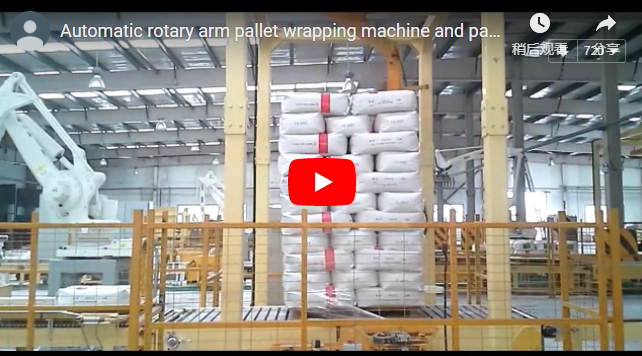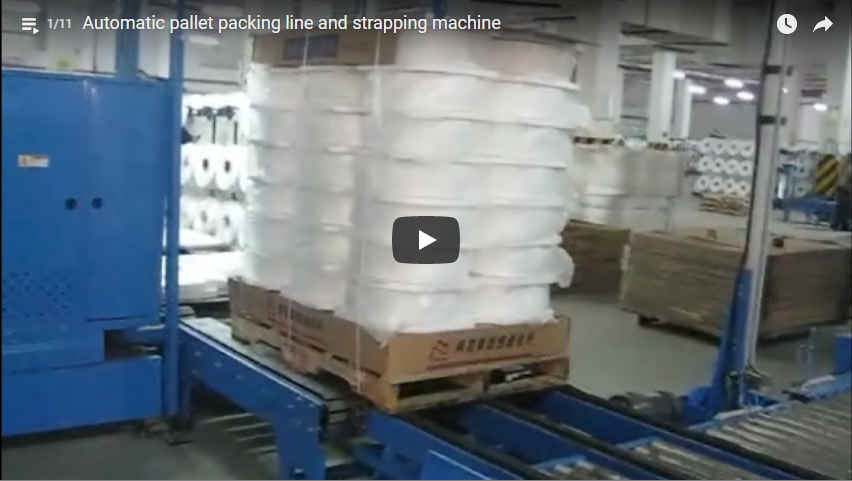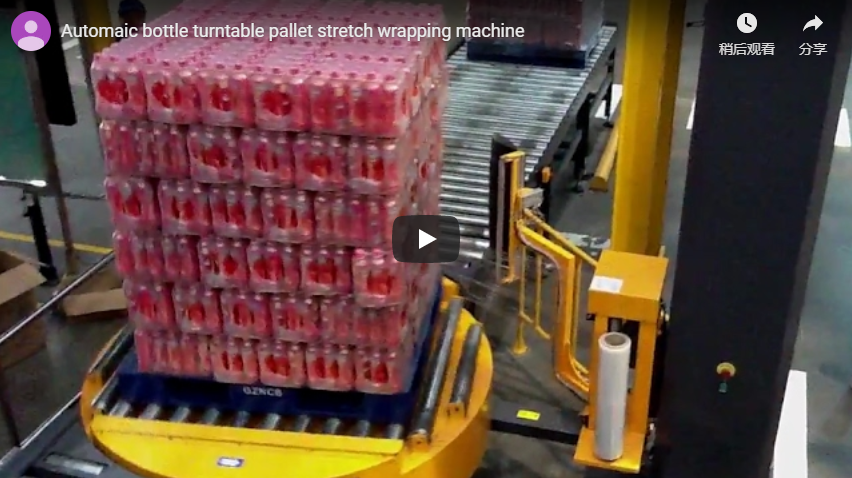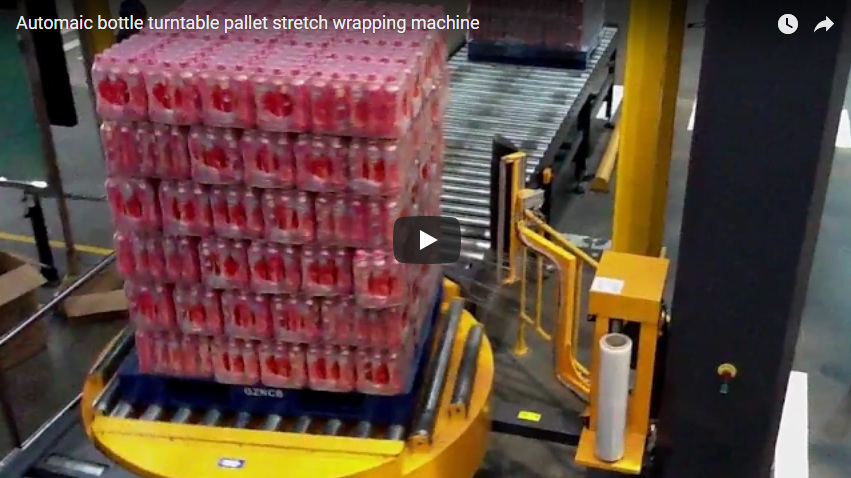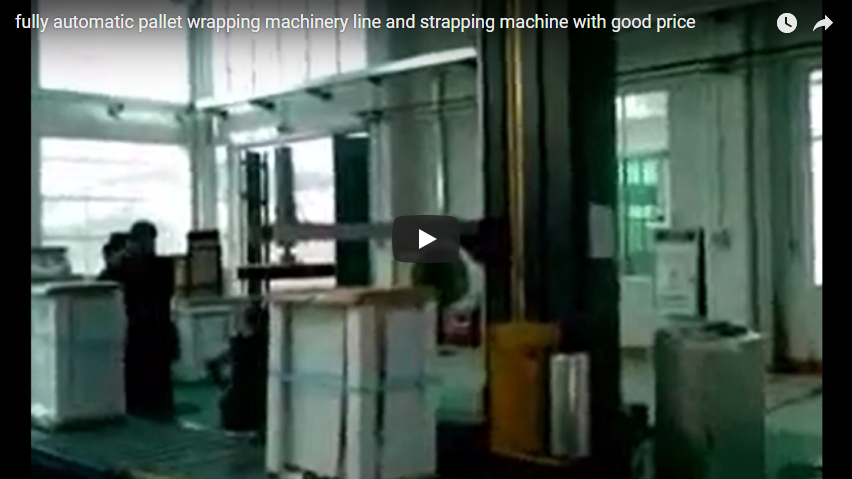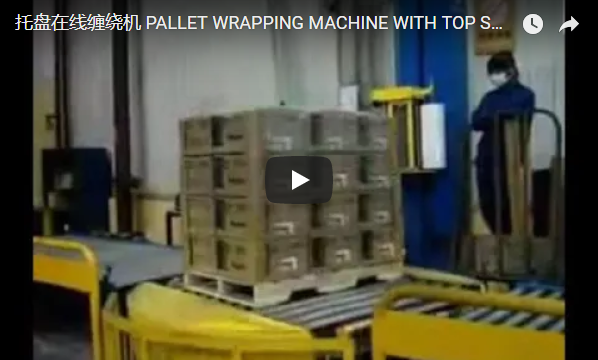Boosting End-of-Line Efficiency: A Deep Dive into Automatic Palletizers and Turntable Stretch Wrappers
In today's fast-paced logistics and distribution environments, optimizing end-of-line packaging processes is crucial for maintaining competitiveness. Manual palletizing and wrapping are often bottlenecks, prone to inconsistencies, potential injuries, and high labor costs. Integrated automatic palletizing and stretch wrapping systems offer a robust solution, enhancing throughput, improving load stability, and streamlining warehouse operations. This article explores the technical aspects and operational benefits of combining these two powerful automation technologies.
1. The Powerhouse: Automatic Palletizer Technology
Automatic palletizers form the foundation of this integrated system, precisely stacking cases, bags, or other product types onto a pallet according to pre-programmed patterns.
Key Technical Considerations & Features:
- Palletizer Types: Common types include robotic arm palletizers (offering flexibility for complex patterns and multiple lines), gantry palletizers (suitable for high-speed, single-line applications), and layer-forming palletizers (building complete layers before placing them). The choice depends heavily on product type, speed requirements, and available footprint.
- Payload Capacity: Systems are designed for specific weight ranges. Ensuring the palletizer can handle the maximum weight of a full product layer and potentially the gripper/tooling is critical.
- Cycle Time/Speed: Measured in cycles per minute (CPM) or cases per minute (CPM), this must match or exceed the upstream production output to avoid bottlenecks.
- Stacking Patterns: Modern palletizers offer programmable patterns to optimize load stability, density, and accommodate various SKU dimensions. User-friendly interfaces allow for easy pattern creation and selection.
- Footprint and Layout: Integration requires careful planning of floor space, considering infeed/outfeed conveyors, safety guarding, and access for maintenance.
- Integration Capabilities: Seamless communication with upstream equipment (case sealers, checkweighers) and downstream systems (stretch wrappers, AGVs) via protocols like Ethernet/IP is essential.
From Personal Experience: Implementing an automatic palletizer often reveals surprising upstream inefficiencies. Ensuring consistent case sizes and quality becomes paramount, as the robot relies on predictable inputs. The biggest immediate impacts observed are usually a significant reduction in manual handling risks and a remarkable increase in stacking consistency, directly contributing to more stable loads downstream.
2. Load Security Expert: The Turntable Stretch Wrapper
Once palletized, the load moves to the automatic turntable stretch wrapper, which secures it using stretch film for transport and storage.
Key Technical Considerations & Features:
- Turntable Specifications:
- Diameter: Must accommodate the largest pallet dimension (e.g., 40"x48", 48"x48").
- Speed: Variable rotation speed (RPM) allows adjustment for load stability and wrap cycle time.
- Max Load Weight: Capacity must exceed the heaviest anticipated pallet load.
- Wrap Height Capacity: The machine must accommodate the tallest expected pallet loads, often controlled by a photo-eye sensor.
- Powered Pre-Stretch Carriage: This is a critical feature for film efficiency. Ratios of 200-300% are common, meaning 1 foot of film is stretched to 3-4 feet, significantly reducing film consumption and improving load containment force.
- Film Tension Control: Electronic controls maintain consistent film tension throughout the wrap cycle, regardless of load shape or turntable speed, preventing overtightening (crushing) or under-tightening (loose wrap).
- Automatic Film Cut & Clamp: At the cycle's end, the machine automatically cuts the film and clamps it, readying the machine for the next pallet and eliminating manual intervention.
- Control System (PLC/HMI): User-friendly interfaces (HMIs) allow operators to select wrap programs, adjust parameters (top/bottom wraps, tension, speed), and troubleshoot issues.
Operational Insight: While the concept seems simple, optimizing a stretch wrapper involves balancing film type, pre-stretch level, tension, and wrap pattern for each specific load type. I've seen facilities achieve over 40% reduction in film usage simply by migrating from manual wrapping to an automatic turntable wrapper with a properly configured powered pre-stretch system. Furthermore, the consistency provided is night-and-day compared to manual wrapping, drastically reducing shipping damages attributed to poorly secured loads.
3. Seamless Integration: The Palletizer-Wrapper Synergy
Connecting the automatic palletizer directly to the turntable stretch wrapper via automated conveyors creates a fully autonomous end-of-line packaging cell.
Benefits of Integration:
- Eliminates Manual Transfer: Removes the need for forklift operators to move pallets between stations, reducing labor, time, and potential damage.
- Continuous Flow: Creates a smoother, more predictable packaging process, enhancing overall line efficiency (OEE).
- Reduced Footprint: Integrated systems can often be designed more compactly than separate machines with manual transfer space.
- Improved Safety: Minimizes human interaction in potentially hazardous areas around moving machinery and loads.
Integration Challenges: Key considerations include matching the throughput speed of both machines, ensuring reliable conveyor handoffs, and implementing robust safety systems (light curtains, fencing) around the entire cell. Proper planning and experienced integration partners are vital. Industry resources like PMMI (Packaging Machinery Manufacturers Institute) and MHI (Material Handling Industry) offer valuable insights into best practices for automation integration.
4. Conclusion: Investing in Automated End-of-Line Solutions
The combination of automatic palletizers and turntable stretch wrappers represents a significant step towards optimizing logistics operations. These systems deliver tangible benefits in terms of speed, consistency, labor reduction, safety, and load protection. While the initial investment requires careful consideration of specific technical requirements and integration planning, the long-term ROI, driven by increased efficiency and reduced operational costs, makes it a compelling solution for modern distribution centers and manufacturing facilities.
For further inquiries or specific application consultations, please reach out:
info@fhopepack.com
Explore related technologies:
https://www.fhopepack.com/Rotary-ring-stretch-wrapper/Rotary-ring-stretch-wrapping-machine.html

